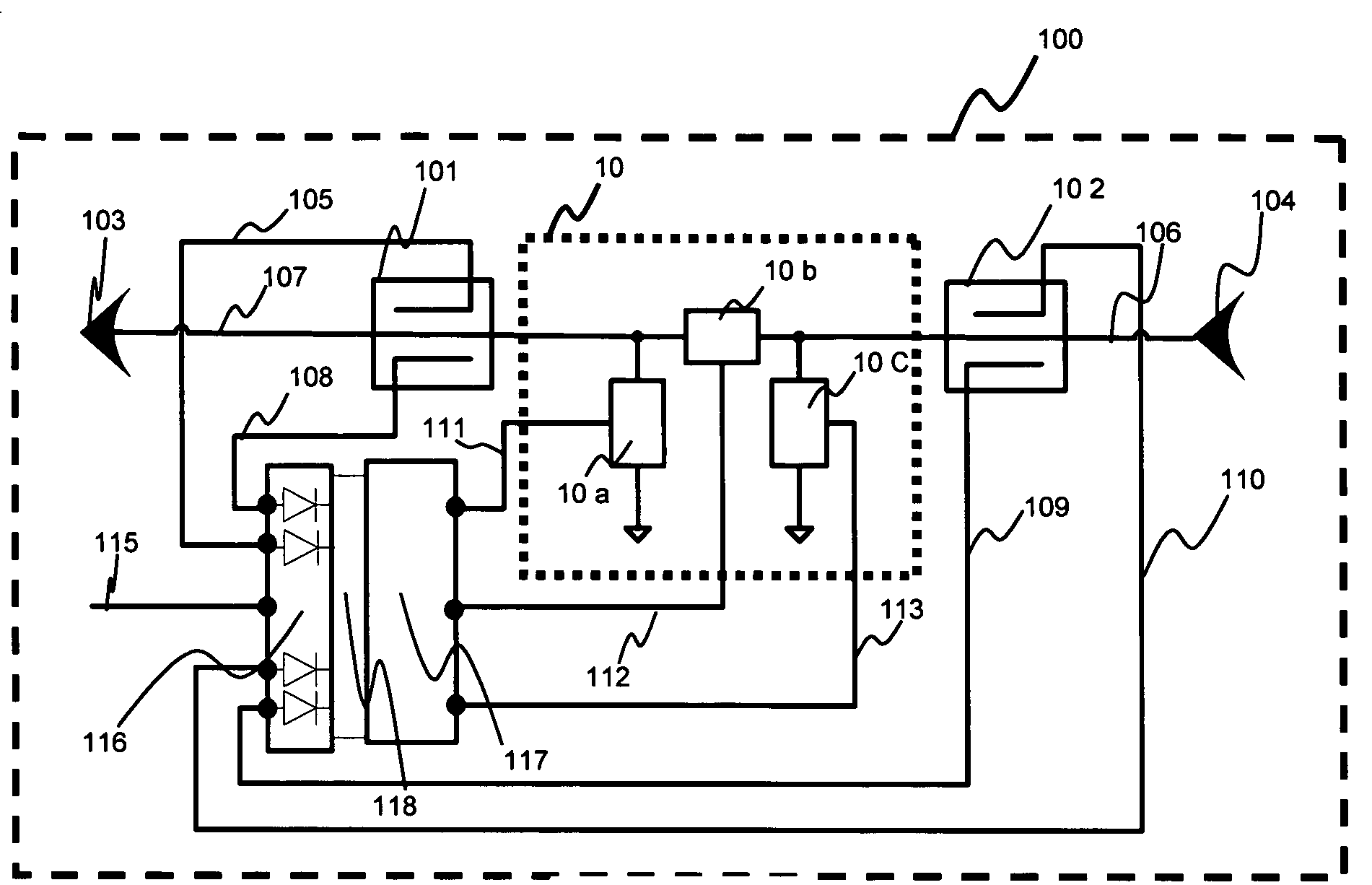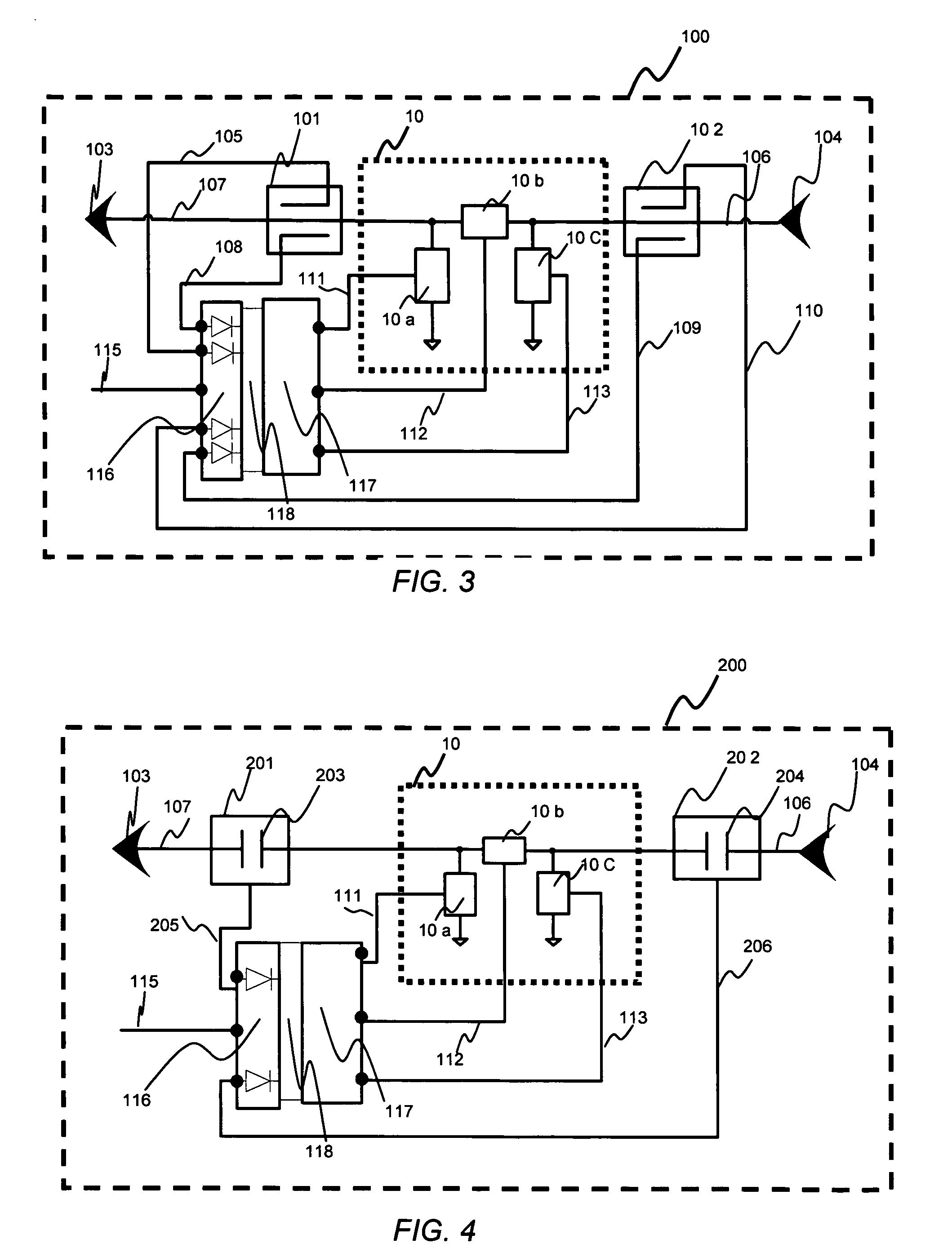Tunable microwave devices with auto-adjusting matching circuit
a matching circuit and microwave technology, applied in the field of tunable microwave devices with auto-adjusting matching circuits, can solve the problems of not meeting the requirements of large data transmission of the future, the speed and quality of gsm will not meet the requirements of wireless applications, and the 50 ohm design target is never perfectly m
- Summary
- Abstract
- Description
- Claims
- Application Information
AI Technical Summary
Benefits of technology
Problems solved by technology
Method used
Image
Examples
Embodiment Construction
[0049] In the following detailed description, numerous specific details are set forth in order to provide a thorough understanding of the invention. However, it will be understood by those skilled in the art that the present invention may be practiced without these specific details. In other instances, well-known methods, procedures, components and circuits have not been described in detail so as not to obscure the present invention.
[0050] An impedance matching network or circuit, may be a combination of reactive elements connected between a circuit and at least one load that transform the load impedance into another impedance value to achieve improved performance such as maximum power transfer, reduced reflections, or optimum load performance. An impedance matching network may be made up of a combination of lumped elements, (resistors, capacitors, and inductors), or distributed elements (transmission lines of varying characteristic impedance and length). Similarly, an impedance ma...
PUM
 Login to View More
Login to View More Abstract
Description
Claims
Application Information
 Login to View More
Login to View More - R&D
- Intellectual Property
- Life Sciences
- Materials
- Tech Scout
- Unparalleled Data Quality
- Higher Quality Content
- 60% Fewer Hallucinations
Browse by: Latest US Patents, China's latest patents, Technical Efficacy Thesaurus, Application Domain, Technology Topic, Popular Technical Reports.
© 2025 PatSnap. All rights reserved.Legal|Privacy policy|Modern Slavery Act Transparency Statement|Sitemap|About US| Contact US: help@patsnap.com



